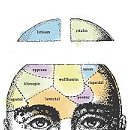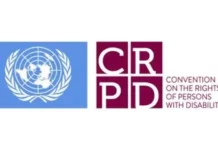A newly published article in the Journal of Policy and Practice in Intellectual Disabilities reveals significant gaps in disability research. Although there’s been a yearly increase in publications on inclusion, integration, exclusion, and segregation for people with disabilities since 2006, the study found that only 30% of this research engaged directly with individuals with disabilities.
The study, led by a team of researchers at the University of Melbourne, finds that the majority of research on disabilities focuses on high-income Western countries and people with psychosocial and intellectual disabilities. The authors emphasize the ongoing debate about the definitions of “disability” and “inclusion,” stating:
“We found the volume of publications has increased each year for the past 15 years… Only 30% of the literature included the direct experiences and perspectives of people with disability… This may account in part at least for the slow progress towards inclusion and the realization of Bengt Nirje’s vision for ’a society where people might be themselves among others.’”

www.disabilityrightsca.org
To gain insights into the characteristics of research on inclusion, integration, exclusion, and segregation, the authors conducted a systematic literature review using databases like PubMed, EBSCOhost, EMBASE, ProQuest, PsycINFO, Cochrane Library, Scopus, and Web of Science. They examined 457 peer-reviewed articles published in English after 2006, excluding those related to drug or clinical trials, acute conditions, hospital-based research, or those focused on individuals held for legal reasons.
The authors identified eight characteristics of research around inclusion, integration, exclusion, and segregation.
- Increased Publications: There has been a growth in research since 2006, partly attributed to the UN Convention on the Rights of Persons with Disabilities (UNCRPD). However, not all research fully aligns with the UNCRPD’s tone or emphasis.
- Western Bias: The overrepresentation of high-income Western countries limits the generalizability to other populations, centering the academic literature around Western concepts.
- Health Sciences Focus: About 75% of the research comes from health sciences, possibly leading to a medicalized view of disability rather than considering social and structural lenses.
- Limited Perspectives: Only 30% of the articles include perspectives from people with disabilities. The majority of articles focused on psychosocial and intellectual disabilities, with physical disabilities receiving less attention. For example, 87% of the articles focused on psychosocial and intellectual disabilities, with 48.55% focusing specifically on psychosocial disabilities.
- Lack of Focus on Key Themes: Less than half of the articles primarily addressed “integration,” “inclusion,” or “segregation.” Most focus is on “integration.”
- Specific Populations: The study found the terms “integration,” “inclusion,” and “segregation” were predominantly associated with particular populations. 81% of the texts focused on “integration” dealt with populations with psychosocial disabilities. 82.5% of the texts focused on “inclusion” dealt with populations with physical and intellectual disabilities.
- Diversity Oversight: Despite evidence of heightened disadvantage among minority groups, only 27.35% of articles considered diversity in their populations. Age was the primary variable, while gender and LGBTQI+ communities were rarely considered.
- Absence of Family Context: The literature largely overlooks people with disabilities living with their parents, an oversight noted as significant.
The authors acknowledge several limitations to their research. They focused exclusively on peer-reviewed literature in English, potentially overrepresenting wealthy Western countries in their sample. Additionally, the scope of the review was broad, limiting their ability to focus on specific debates within the field.
“While what we do know has been influential in social policy, it is what we do not yet know that could be holding us back. What is clear is that it is insufficient to simply pursue (perpetuate) the current research agenda to fill these knowledge gaps. We need a diversity of approaches and a diversity of persons pursuing these approaches, including representation of the diversity of people with disability driving the research agenda.”
Researchers have recognized the need for a new approach to madness and distress, informed by those with lived experience, to fully implement the UNCRPD. They have also called for increased collaboration between the United Nations and people with disabilities to shape global mental health priorities.
Studies show that a third of children and adolescents with disabilities face violence, and people with intellectual and developmental disabilities are often given inappropriate and risky antipsychotic drugs. Researchers have urged governments to provide more support for including people with psychosocial disabilities, as biased attitudes and infrastructure often hinder full and effective participation in community life.
****
Spivakovsky, C., McVilly, K., Zirnsak, M. T., Ainsworth, S., Graham, L., Harrison, M., Sojo, V., Gale, L., & Genat, A. (2023). The ontology and epistemology shaping our understanding of inclusion: A critical review of the research literature on disability and inclusion. Journal of Policy and Practice in Intellectual Disabilities. https://doi.org/10.1111/jppi.12461 (Link)














“Researchers have recognized the need for a new approach to madness and distress, informed by those with lived experience, to fully implement the UNCRPD.”
As a “researcher,” who is “informed … with lived experience.” Who knows both the antidepressants and ADHD drugs can create the “bipolar” symptoms.
https://www.amazon.com/Anatomy-Epidemic-Bullets-Psychiatric-Astonishing-ebook/dp/B0036S4EGE
And knows, from personal experience, that both the antidepressants and antipsychotics can create the positive symptoms of “schizophrenia,” via anticholinergic toxidrome.
https://en.wikipedia.org/wiki/Toxidrome
Plus, I found the medical evidence that the antipsychotics / neuroleptics can create the negative symptoms of “schizophrenia,” via neuroleptic induced deficit syndrome.
https://en.wikipedia.org/wiki/Neuroleptic-induced_deficit_syndrome
Research, all of which, largely proves the iatrogenic etiology of the two “most serious DSM mental illnesses.”
I totally agree, research led by those who actually care about their own health, and the future health of their children, is needed, “to fully implement the UNCRPD.” Psychiatry is all about making people sick for profit … and that is sick, on psychiatry’s part … albeit highly profitable.
Report comment